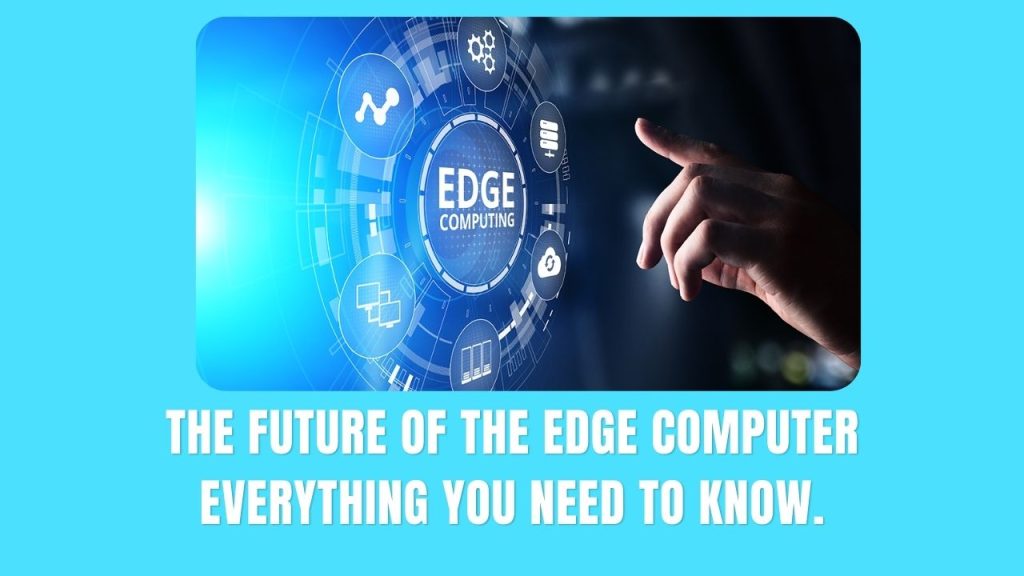
In recent years, the rise of edge computing has been transforming the way data is processed and transmitted. As we continue to move towards a world that is increasingly connected and data-driven, it is important to understand the potential benefits and challenges of this emerging technology. In this article, we will explore the future of edge computing, including its applications, challenges, and potential impact on various industries.
What is Edge Computing?
Edge computing refers to the processing and analysis of data at or near the source of data generation. This can be done through various means such as edge devices or gateways. The main objective of edge computing is to reduce latency, enhance security and privacy, and improve network efficiency by reducing the amount of data that needs to be transmitted to central cloud servers.
How Does Edge Computing Work?
Edge computing involves processing data on devices that are closer to the source of the data, such as IoT devices, edge servers, and gateways. These devices can process data and perform analytics in real-time, which can help to reduce latency and improve network performance. Additionally, edge devices can be used to store data and perform tasks such as data filtering, aggregation, and preprocessing.
Applications of Edge Computing
Edge computing has numerous applications across a range of industries. In manufacturing, edge computing can be used to improve the efficiency of production lines and optimize supply chains. In healthcare, edge computing can help to improve patient outcomes by providing real-time monitoring and analytics of patient data. In transportation, edge computing can be used to improve traffic management and optimize routes. Additionally, edge computing can be used in smart cities to monitor and manage city infrastructure such as traffic lights, streetlights, and waste management.
Benefits of Edge Computing
Edge computing has several key benefits, including:
Reduced Latency
One of the main benefits of edge computing is reduced latency. By processing data at or near the source of data generation, edge computing can reduce the time it takes for data to travel from the source to the cloud server and back. This can be particularly beneficial for applications that require real-time data processing, such as self-driving cars, drones, and virtual reality.
Improved Security and Privacy
Edge computing can also improve security and privacy by reducing the amount of data that needs to be transmitted to central cloud servers. By processing data on the edge devices, sensitive data can be kept closer to the source, reducing the risk of data breaches and cyber-attacks.
Better Network Efficiency
Edge computing can also improve network efficiency by reducing the amount of data that needs to be transmitted to central cloud servers. By processing data on the edge devices, network bandwidth can be conserved, reducing the load on central cloud servers and improving overall network performance.
Challenges of Edge Computing
While edge computing has many benefits, there are also several challenges that need to be addressed, including:
Security Risks
Edge devices are often located in remote or unprotected areas, making them vulnerable to physical attacks and cyber-attacks. This can put sensitive data at risk and compromise the security of the entire network.
Lack of Standards
There are currently no industry-wide standards for edge computing, which can make it difficult to develop and deploy edge applications. This can result in compatibility issues and make it difficult for businesses to adopt edge computing technology.
Complexity
Edge computing involves the management and coordination of a large number of edge devices, which can be complex and time-consuming. Additionally, edge computing requires specialized skills and expertise, which can be difficult to find and expensive to acquire.
The Future of Edge Computing
The future of edge computing is bright, with the technology expected to grow rapidly in the coming years. According to a report by MarketsandMarkets, the edge computing market is expected to grow from USD77.9 billion in 2021 to USD 250.6 billion by 2026, at a Compound Annual Growth Rate (CAGR) of 26.5% during the forecast period.
Edge Computing and 5G
The rollout of 5G networks is expected to drive the growth of edge computing, as 5G networks require low latency and high bandwidth, which can be achieved through edge computing. Edge computing can help to reduce the load on 5G networks by processing data closer to the source, reducing latency and improving overall network performance.
Edge Computing and AI
Edge computing can also be used to enhance the capabilities of AI by processing data in real-time. By processing data on edge devices, AI applications can respond more quickly and efficiently, improving the overall performance of AI systems.
Edge Computing and the Cloud
Edge computing is not meant to replace cloud computing, but rather to complement it. Edge computing can be used to reduce the amount of data that needs to be transmitted to central cloud servers, while cloud computing can be used for more complex tasks that require greater computing power and storage capacity.
Edge Computing and Sustainability
Edge computing can also contribute to sustainability efforts by reducing the energy consumption of data centers. By processing data on edge devices, the load on central cloud servers can be reduced, resulting in lower energy consumption and carbon emissions.
Conclusion
In conclusion, edge computing is an emerging technology with significant potential to transform the way data is processed and transmitted. Edge computing has numerous applications across a range of industries, and is expected to grow rapidly in the coming years. While there are several challenges that need to be addressed, the benefits of edge computing are significant, including reduced latency, improved security and privacy, and better network efficiency. As the technology continues to evolve, edge computing is likely to become an increasingly important part of the digital ecosystem.